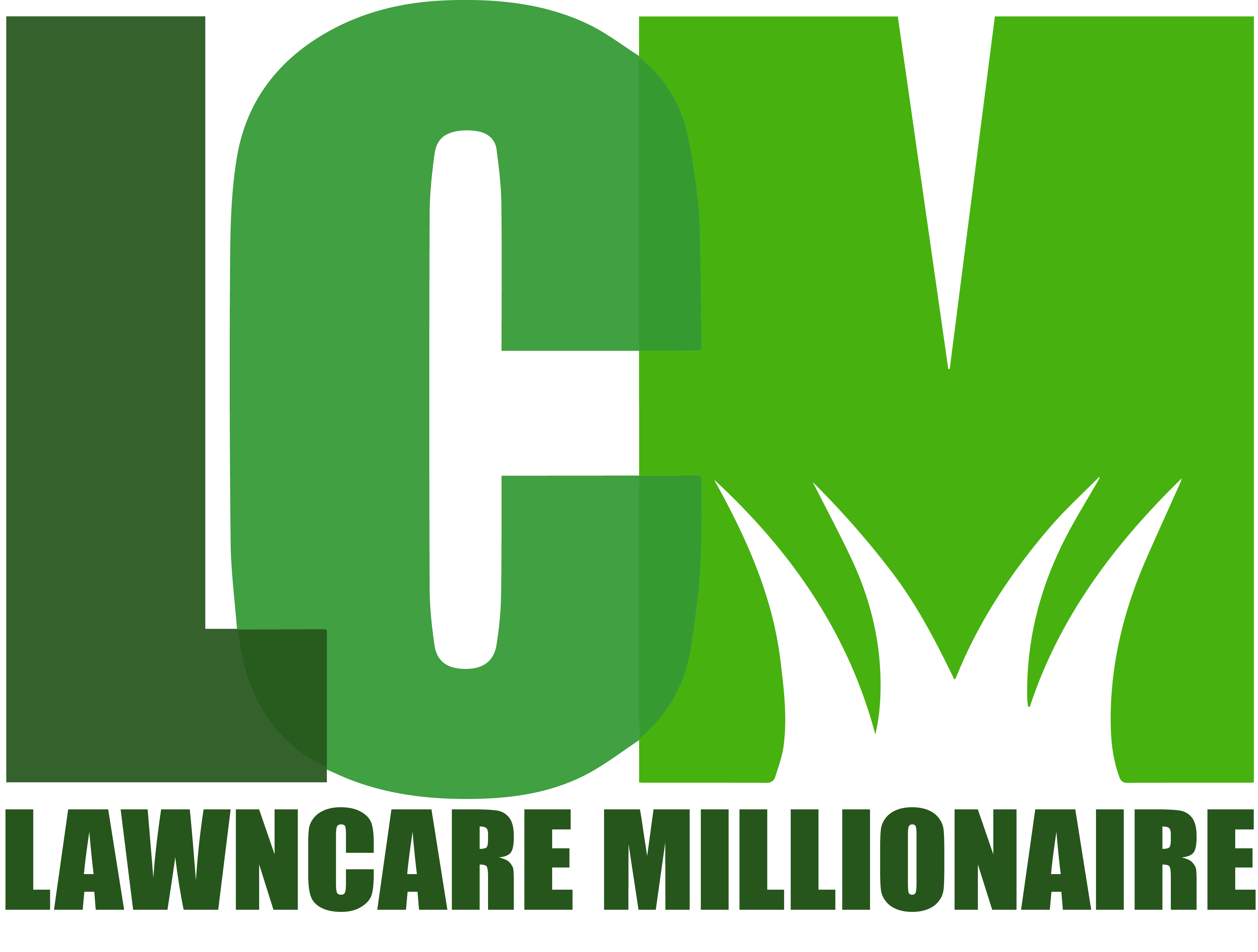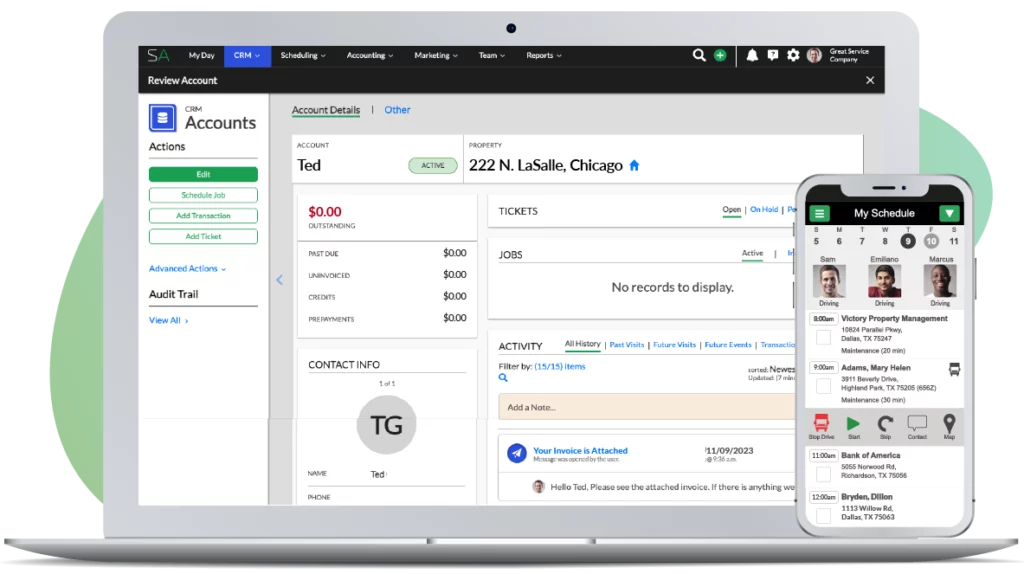Learn how to set lawn care pricing to earn the most profit for your business.
I receive a ton of questions, and I would say in the top two or three is, how do I price? How do I know exactly what I should charge? I think this is the right question to be asking. The dilemma is that I struggle with giving the exact price and here is why.
I can give you exact pricing, but it’s a cop out for me to do that. That’s the easy solution for me. The problem is, I’m very concerned with giving you accurate advice. I don’t want to be wrong. I don’t want to screw up your business, and I want to give you wise advice. Giving you the exact price to charge is not wise advice.
In this video, I’m going to show you exactly why. I’m going to show you the factors that go into pricing and why I can’t give you the exact price. I’m going to tell you exactly how to figure out the best pricing for you. I’m going to show you numbers and how to do it. You’re going to learn how to price. Once you’ve priced your work, I’m going to show you exactly how to figure out of it’s profitable. I’m also going to show you how to figure out your pricing by square foot. Basically I’m going to show you how to do it, and I’m going to show you how you continue to look at your pricing as your business grows.
Now, to do this I’ve got to go through a few points so this is going to be a three-part video. I’m going to go through and talk about pricing, and then I’m going to show you how to do it. I’m going to show you actual numbers.
There are two things to know. One, there are all kinds of services. Mowing, fertilization, weed control, aeration, pest control, you name it. At the end of the day the pricing is all based on time. For the sake of my example, I’m going to use a residential mowing example. This concept also applies to commercial and it applies to every different service type including digging a whole and sticking a bush in the ground. This is the universal truth behind pricing, and that is pricing is based on time.
You and I are in the business of selling time. Let’s say your competitor has figured out in their business that they should charge three extra dollars for every 1,000 square feet for fertilization and weed control. If they’re smart, they didn’t just copy their competitor. Rather, they figured it out based on time and they know that to do an extra 1,000 square feet it takes this amount of extra time to walk it. They spray it at a certain rate and they figured out what that charge needs to be.
I’m going to go through the example based on mowing, but know that square footage pricing is based on time. It’s not based on square feet. You figured out your square footage pricing based on time. That’s important, so hopefully I’ve made my point.
We’re using a mowing example. If you want to arrive at square footage pricing, which is sort of the premise of this conversation, then you want to figure out if you want to price by gross lot square feet, or do you want to price by net or by turf. You might price from one service to the next differently. For example, you might price mowing based on gross lot square footage. Whereas, you price aeration based on turf, and pest control based on the home square footage.
What net is, and this is how some companies price, you take the gross lot square footage and you pull out of that the footprint of the home and maybe the pool. It depends on how your company works. That’s net. That leaves concrete in. That leaves turf in. That leaves flower beds in. That’s something to know and think about as you’re setting your pricing and as you’re figuring out your pricing by square footage.
The other critical thing is the only way you can price is if you track time. Otherwise, your only other options are to guess and copy your competitors, and neither one of them gets you to the place you want to be…a highly profitable business. I mentioned this already. It’s just about the most important thing I’m going to say. We’re in the business of selling time. Pricing is going to be based on time.
Now, one last thing before I get into the details. Let’s say, now you’re wondering how to price fertilization and weed control because there’s product costs involved. The number one item on your P&L sheet, meaning the biggest expense on your profit and loss statement is labor. Labor is the thing that you want to manage above all other things inside the business because it’s your biggest expense. You’re, again, in the business of selling time. When you’re determining pricing, you first start with how long it’s going to take to perform. Then you figure what you have to charge just purely based on selling time and labor.
Now, you can layer on top of that additional things if you’d like. This could be a whole three-hour conversation in and of itself. But, for the sake of our simple example, we figure out that for fertilization and weed control it takes a technician one hour to do a property of a certain size, and we want to make $40 a man hour. That means, I need to charge $40 any time we do a lot of that size. Let’s just put a number to it of 8,000 to 9,000 square feet. That’s not accurate. That’s just my example.
We figure out that when you were doing 8,000 to 9,000 square feet for fertilization and weed control I need to be charging $40. That covers my time, makes a profit, recovers overhead and does all of that. Now, on top of that, I’ve got chemical costs. For that size property I know on average across the applications for the year that I’m going to have an average of $7.50 in chemical cost. My price for that service might be 47.50. I’m making the $40 on the labor, and then I’m recovering my cost on the chemical. You could mark it up. All of that’s up to you. You are setting the pricing. But, that’s the idea. Figure out labor first and then you can layer on top of that your mathematical cost, your product cost, and your chemical cost.
Again, this is going to be a couple-part video because there’s a lot to cover here if I’m going to give you the full details.
Now, why is it that when you ask me what I should charge to provide this service that I struggle with answering that question, and why I feel as though if I tell you the exact pricing I’m doing you a tremendous disservice? There’s nothing that would make me feel worse then knowing that I gave you a price that led to unprofitable work or led to potentially harming your company. Here’s why.
If I charge, let’s just make up a number, $30 to mow a little bitty lawn. I tell you for this size lawn you should charge $30. What does your business look like as compared to my business? I’ve worked on my business. We just turned 10 years old. We’ve been working on our business. We’ve become more efficient. We’ve optimized things in our business. We’ve changed. We are nothing like what we were 8-9 years ago, not even similar.
Think about how many men are on your truck versus my truck? At $30, if I have two men on the truck and you run three men, and maybe the three-man may not be as efficient as two. That means you’re going to be on the property for longer and that means you’re not going to be making money at $30 per visit like I do.
How’s your truck set up? Do you pull trailers? What’s the basic setup? If my truck setup shaves four minutes off of my visit time and your truck setup doesn’t, then I’ve immediately got efficiencies you don’t have. My pricing doesn’t work for you.
What’s your equipment setup? Are you out there with 48″ walk-behinds, whereas I’m there with 21″ mowers? Or, am I out there with a 61″ rider and you’re out there with all walk-behinds? Again, who’s more efficient? If I’m more efficient than you, I just killed you by telling you to charge what I charge because I’ve got a totally different setup.
What’s the frequency? Is it biweekly? Is it weekly? Because in mowing that has a huge impact on how long it takes to do the work. Are my properties all flat, whereas you are in a market where there’s a lot of terraced properties? Are your properties wooded where all of mine are builders that came in and cut down all the trees and planted two new trees in the front yard, so I have virtually nothing to mow around? Is mine flat and you have hills? I’m in Texas after all. It’s pretty flat.
Do you mulch or bag? For example, if I mulch most of my properties and you bag, you’ve just added time that I don’t have.
Are your properties constructed in such a way where you have tons of concrete? That means you have a lot more edging. That means you have a lot more blowing, whereas I hardly have any concrete on my properties for the same square footage because now, yes square footage is the same but we’re performing different services. That means different time. In services, I mean we’re spending more time mowing maybe, whereas you’re spending more time blowing. If it’s super-windy in your market and it’s not windy in my market, what’s that do to blowing?
My point is, I’m belaboring it here, but you get the idea of how many variables there are. What about stick edging? In my market I have to stick edge weekly. What if in your market you only have to stick edge every other week or once a month. What about fences? We have fences. What if you don’t have fences? What if you have metal fences versus wood fences? What’s that mean to weed eating time.
Then finally, what’s the spring effect in your market? How much longer does it take you to mow a property in spring than it takes me to mow a property in spring, based on leaves and all kinds of other factors like the type of grass.
This is why the pricing is literally different all over the board, and copying price is a disaster. This is why I could say I charge 30 for this, and if you’re in Toronto and you charge 30, and everything about the way we operate is different. I really, really did you a disservice.
Now, how do you figure this out for yourself? Because it’s really not that hard. If you want to make a lot of money, than you want to learn how to do this. You’ve got to track your time, period. When you’re tracking the time, you need to know how many people are doing the job. That’s easy. Then you want to have measured the property, measured the gross lot square footage. I’d recommend the turf lot square footage. You don’t have to get out there with a measuring wheel. There are measuring tools built into Service Autopilot and there are measuring tools for free all over the web.
What’s the calculation? I’m going to give you numbers on these other spreadsheets here in a minute, but what’s the basic calculation? Basically, you take the start and end time of the job and you figure out the number of men. Then you get the total time. I’m going to show you what I mean by this. Here’s how you do it.
Let’s just use the example of you’re running a crew of three. You pull up in the truck, you turn off your engine, you write down the start time, or if you’re using software, you clock in. You perform the work. Then when everyone gets back in the truck, you stop the timer. You start the engine, you drive away. Now you have your start time and your end time.
Let’s look at how that would play out. Your property is 10,000 square feet, 4,414 square feet of turf. You are on the property from start to end, meaning they got out of the truck, got back in the truck. Start to end is 20 minutes. I’m keeping the math simple. There were three individuals. The total time on the job was one man hour. You had three men there for 20 minutes. That equates to one man hour or 60 minutes. If you charged the client $30 to mow that lawn, than you made $30 per man hour. If you had been there for 40 minutes, so 40 minutes times three, so you were there for two total hours and you charged $30, then you would have made a man hour rate of $15 per man hour. You kind of get the idea of how the math works. This is the core of pricing every single service.
Now, let’s say that you look at this and you say you’re only making $30 a man hour and you heard me say that you should really be $40 and above per man hour, which is my argument. When I started in the business, I was in the $25 range because I copied a bunch of competitors. Then I was in the 30s for mowing and some other things. I quickly realized those were not good numbers, but I was copying what my market was doing. If you look at your business and say, wait a second, we’re only making 30 a man hour on this property. That’s too low, so what’s your option? Your option is one, to raise the price on that client so that you can make enough money based on the amount of time you’re there. Or, you need to become more efficient and do that property faster.
Where do you find efficiencies? A few of the clues are up here. How many men are doing the job? What’s the setup of the truck? What kind of equipment are you using? Are you picking the right properties, meaning are you predominantly serving a market where the properties are too big or there’s too many trees, whereas if you were to go focus on a different market you could make more money? Those are some of your decisions. All of that goes into pricing.
Now in video part two, I’m going to start showing you numbers and I’m going to show you how to figure this out.



